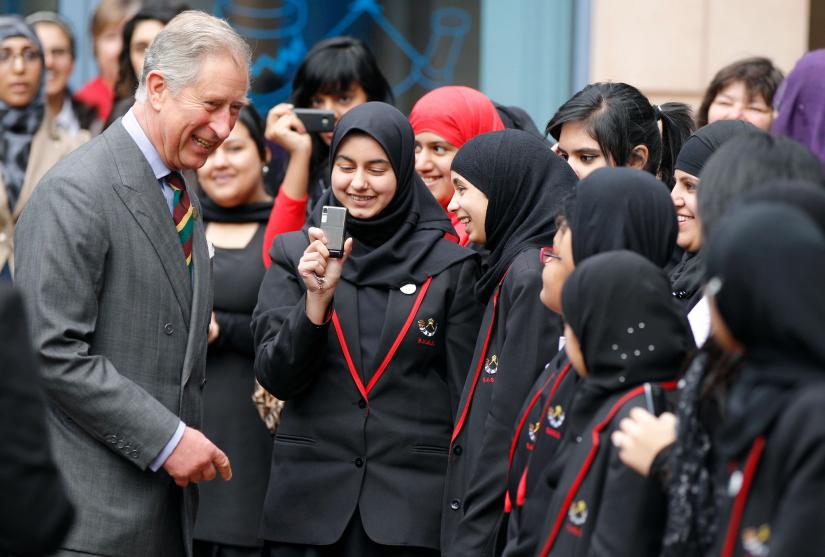 Schoolchildren from Bangladeshi backgrounds have raced ahead of their white British peers in terms of learning in schools across England, according to a new report on education standards in the country released in London on Tuesday.
Schoolchildren from Bangladeshi backgrounds have raced ahead of their white British peers in terms of learning in schools across England, according to a new report on education standards in the country released in London on Tuesday.
The Education Policy Institute (EPI) think tank said in its flagship Annual Report 2019 that pupils from an Asian background who were already ahead of their white British classmates have registered even further improvement since 2011.
“Some groups of pupils who were already ahead of White British pupils, have raced even further ahead since 2011. These include pupils from 'any other Asian background' (by an additional 4.5 months), Bangladeshi pupils (by 4.3 months), Chinese pupils (by 2.6 months) and Black African pupils (by 2.4 months),” the report notes.
“Pakistani pupils who were 3.4 months behind white British pupils in 2011 have now narrowed that gap to 0.5 months in 2018,” it adds.
In its measure of the ethnicity gap by comparing the performance of white British pupils to those from other ethnic groups, the report revealed that Chinese and Indian origin pupils outperform white British pupils across different levels of schooling.
The report notes: “By the end of primary school, Chinese pupils are around 12 months ahead of White British pupils, closely followed by Indian pupils who are around seven months ahead.
“By the end of secondary school (using our headline measure of the gap in GCSE English and maths), we see those gaps widen. Chinese and Indian pupils still attain significantly higher than their White British peers and are ahead by 24.8 and 14.2 months respectively.”
GCSE, General Certificate of Secondary Education, is the board level certification that applies across schools in England. In the research based on the UK’s Department of Education figures, EPI also found that black Caribbean students lag 2.2 months behind white British pupils and that teenagers from poorer backgrounds lagged behind economically better off students.
It called on the government to review its policies and resourcing, especially in light of the trends in secondary and post-16 education, to close the ethnicity and disadvantage gaps in learning.
"If current trends continue, we could plausibly undo some of the real progress that has been made in recent years,” it concludes.
The UK government said that it is working on reducing the gaps in school education, which had "narrowed considerably" in recent years.
Nick Gibb, the minister in charge of school standards, said: "We are investing GBP 2.4 billion this year alone through the Pupil Premium to help the most disadvantaged children.
"Teachers and school leaders are helping to drive up standards right across the country, with 85 per cent of children now in good or outstanding schools compared to just 66 per cent in 2010, but there is more to do to continue to attract and retain talented individuals in our classrooms."
 Others
Others
40377 hour(s) 54 minute(s) ago ;
Morning 04:48 ; Monday ; May 26, 2025
‘Bangladeshi schoolchildren in UK race ahead of white classmates’
Send
Aditi Khanna, London
Published : 06:00, Jul 31, 2019 | Updated : 06:00, Jul 31, 2019
Published : 06:00, Jul 31, 2019 | Updated : 06:00, Jul 31, 2019
0 ...0 ...
/zmi/
Topics: Top Stories
- KOICA donates medical supplies to BSMMU
- 5 more flights to take back British nationals to London
- Covid19: Rajarbagh, Mohammadpur worst affected
- Momen joins UN solidarity song over COVID-19 combat
- Covid-19: OIC to hold special meeting
- WFP begins food distribution in Cox’s Bazar
- WFP begins food distribution in Cox’s Bazar
- 290 return home to Australia
- Third charter flight for US citizens to return home
- Dhaka proposes to postpone D8 Summit
Unauthorized use of news, image, information, etc published by Bangla Tribune is punishable by copyright law. Appropriate legal steps will be taken by the management against any person or body that infringes those laws.
Bangla Tribune is one of the most revered online newspapers in Bangladesh, due to its reputation of neutral coverage and incisive analysis.
F R Tower, 8/C Panthapath, Shukrabad, Dhaka-1207 | Phone: 58151324; 58151326, Fax: 58151329 | Mob: 01730794527, 01730794528


